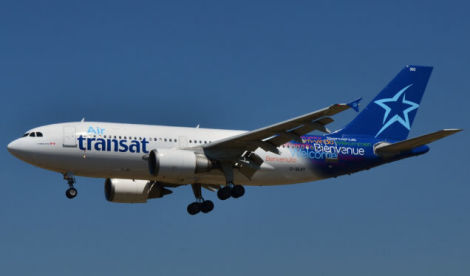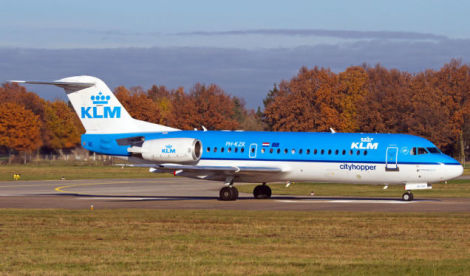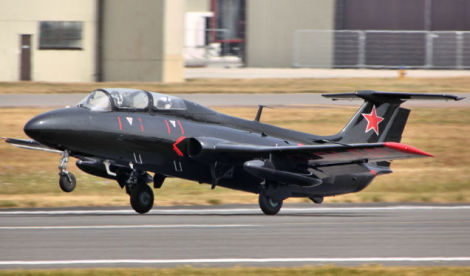Welcome to This Date in Aviation History, getting of you caught up on milestones, important historical events and people in aviation from April 3 through April 5.

April 4, 1957 – The first flight of the English Electric Lightning. When the Cold War began in 1947, the militaries of the world were still fighting with a World War II mentality despite the recent arrival of the jet engine. The intercontinental ballistic missile was still 10 years away, and the long-range bomber remained the primary means for delivering nuclear weapons. By the mid-1950s, surface-to-air missile systems were just beginning to enter service, and defense against nuclear-armed bombers relied on high-speed interceptor aircraft. An interceptor of the 1950s was essentially a missile-armed fighter that could fly at great speed to meet the incoming bombers and shoot them down as far away as possible from their intended targets. As there was no expectation that the interceptor would have to engage in a dogfight with other fighters, extreme maneuverability was sacrificed for all out speed.
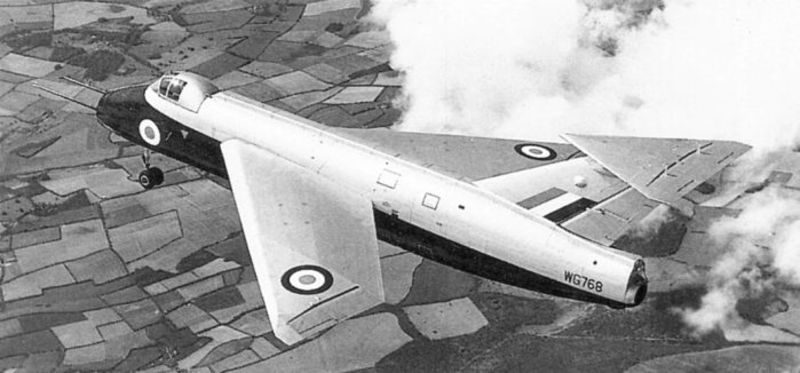
Work on these interceptor aircraft began almost immediately after the war and in 1947, the British Air Ministry issued Specification ER.103 which called for an experimental research aircraft that would be capable of Mach 1.5 with a ceiling of 50,000 feet. W.E.W “Teddy” Petter, the man responsible for the remarkable Canberra bomber, led the design team that created the English Electric P.1, a twin-engine interceptor with a radically swept wing, first 40 degrees, then increased to 60 degrees. Since nobody had ever built an aircraft with such a highly swept wing, Short Brothers, better known as Shorts, was hired to build the SB.5, which had wings that could be moved on the ground between 50, 60 and 69 degrees of sweep. The SB.5 also allowed engineers to evaluate different tail configurations. Designers ultimately settled on a 60-degree wing sweep and a low horizontal stabilizer. But the innovation of the P.1 was not limited to its wings. English Electric also took the unique approach of stacking the two engines one atop the other, rather than the more traditional method of placing them side by side. This arrangement kept the fuselage as narrow as possible to reduce drag.
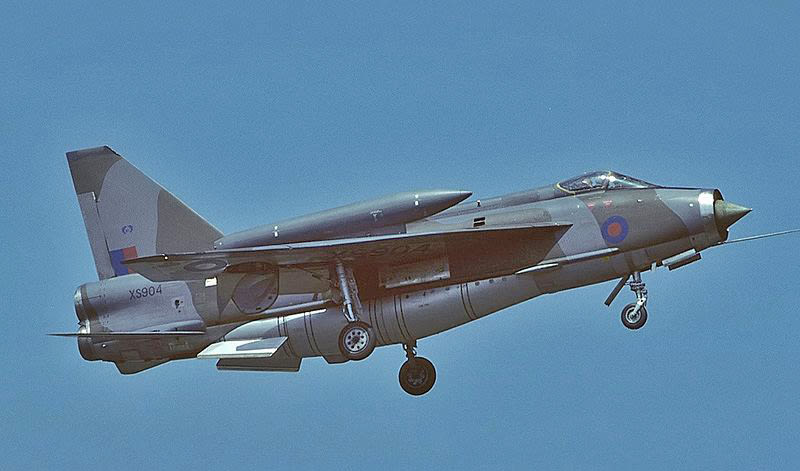
The first developmental aircraft, the P.1A, took its maiden flight on August 4, 1954 and, even without afterburners (or “reheating,” as the British call it) the P.1A officially reached Mach 1 just one week after its first flight, though analysis of testing data showed that it had actually broken the sound barrier on its first flight. A misaligned Mach meter failed to indicate the correct speed. The next step in the development of the Lightning was the P.1B, which featured new Rolls-Royce Avon reheating turbojet engines. Now the Lightning showed its true speed potential when it reached Mach 2 and became the world’s first aircraft capable of supersonic flight without the use of afterburners, known as super cruise. However, that speed came at a cost. The Lightning was a very thirsty aircraft, and the duration of many of its missions was determined simply by the amount of fuel it could carry.

The Lightning entered RAF service in 1960, and soon took on its intended role by intercepting high-flying Russian bombers such as the Tupolev Tu-16, Tu-22 and Tu-95 as they probed the edges of British airspace. With such tremendous power coming from the Avon engines, the fighter could reach an altitude of 36,000 feet in less than three minutes, and though its official ceiling was a closely guarded secret, sorties were flown to intercept the Lockheed U-2 spy plane flying as high as 65,000 feet. Understandably, this capability was also kept secret. The Lightning was armed with two 30mm ADEN cannons, along with hardpoints both over and under the wings and on the fuselage for mixtures of missiles, rockets or bombs. Cameras could also be housed in a ventral weapons bay. While the RAF was the primary operator of the Lightning, a number of the 337 aircraft produced were exported to Kuwait and Saudi Arabia. The RAF retired their Lightnings in 1988, but a small number of aircraft remain flying in the hands of private pilots.

April 4, 1917 – The first flight of the SPAD S.XIII. When WWI broke out on July 28, 1914, the airplane was still in its infancy. The Wright Brothers first flight had taken place a mere 11 years earlier, and military planners were only just beginning to find a role for airplanes in combat. Initially, they were used solely for reconnaissance, known as scouts, but the scout plane crews soon began carrying pistols and rifles into the air to take shots at enemy aircraft. The concept of the dedicated fighter plane soon followed. Development proceeded apace and fighters were soon being produced by all the belligerents in the war, and one of the greatest of those was the SPAD S.XIII.
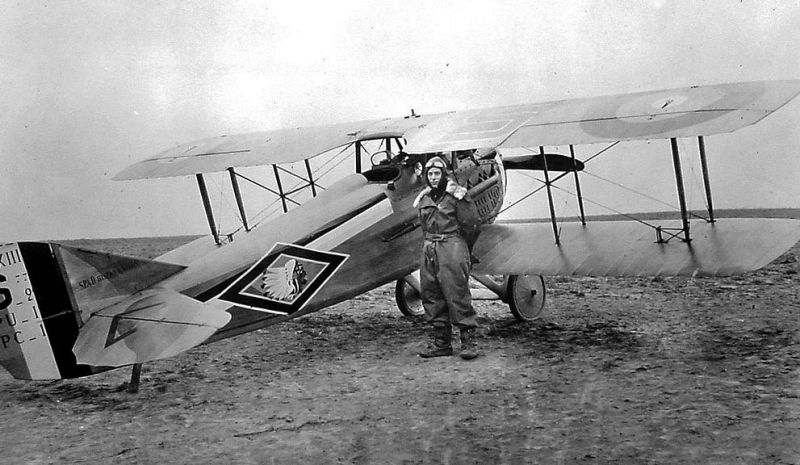
The SPAD S.XIII (SPAD is an acronym for Société Pour L’Aviation et ses Dérivés) was a development of the earlier, highly successful SPAD S.VII which, by 1917, had been outclassed by newer German designs. In response to the calls for greater speed, engine manufacturer Hispano-Suiza raised the compression on the water-cooled V8 to create the 8A, and this 180hp engine was first used in the S.XIII. Later, the improved 8Be engine provided 220hp, and gave the fighter an impressive rate of climb and a top speed of 135 mph. Though the geared engines proved to be somewhat unreliable, the Allies considered it a price worth paying when weighed against the S.XIII’s increased performance. Subsequent development of the engine, and improved construction methods, helped improve reliability. The S.XIII proved to be faster than its contemporaries such as the British Sopwith Camel and the German Fokker D.VII, and could outclimb them as well.The S.XIII was also larger than its S.VII predecessor, and its armament was doubled by the fitting of two Vickers machine guns in place of the single machine gun of the earlier fighter.
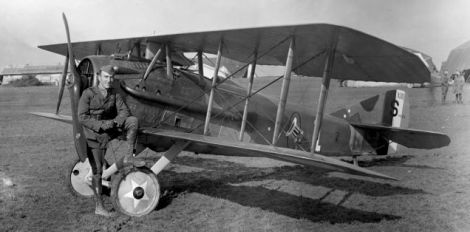
Following its first flight, the S.XIII was quickly introduced to frontline units the following month. Though deliveries were slow, the SPAD S.XIII eventually outfitted a total of 74 Escadrilles (squadrons), nearly every combat unit in action at the time. Fifteen of the sixteen American squadrons fighting in WWI flew the S.XIII, including the 94th Aero Squadron, better known as the Hat-in-the-Ring Squadron, where Eddie Rickenbacker, America’s top ace of the war, notched 26 confirmed victories, many coming at the controls of an S.XIII. The US and French were the primary users, but S.XIIIs also served with the Royal Flying Corps and the air forces of 16 other nations. Nearly 8,500 were produced, and an additional 10,000 more were slated for construction but were canceled following the Armistice that ended the war. Despite the development of newer, more advanced fighters in the latter stages of the WWI, the S.XIII remained in service with the US until 192o, and with France until 1923.
Short Takeoff
April 3, 1982 – The first flight of the Airbus A310, a medium- to long-range wide-body airliner and the second airliner built by Airbus Industrie to enter production. The A310 was developed as a smaller derivative of the Airbus A300 (initially designated the A300B10) at a time when airlines were showing interest in smaller airliners for shorter routes with fewer passengers. Still, the A310 has a greater range than its larger predecessor, and became popular on many transatlantic routes. The A310 has also been developed into a convertible freight version and an aerial tanker for the military. Produced between 1983-1998, a total of 255 have been built, and it remains in limited service today.
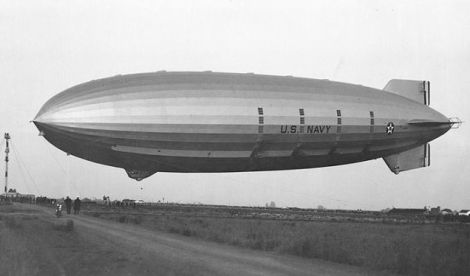
April 3, 1933 – The US Navy airship USS Akron (ZRS-4) crashes into the Atlantic Ocean. Commissioned in October of 1931, Akron was the world’s first purpose-built flying aircraft carrier and one of the largest airships ever built. After encountering severe weather off the coast of New Jersey, Akron crashed into the sea, killing 73 of her 76 crew members, including Rear Admiral William A. Moffett, a leading proponent for the military applications of airships. The disaster caused the largest loss of life for any airship crash, and signaled the beginning of the end of the use of airships by the Navy.
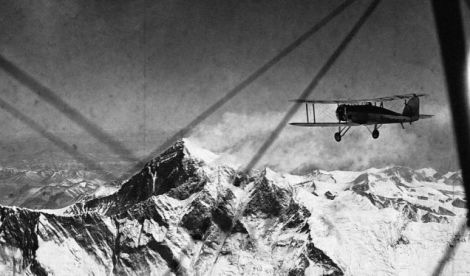
April 3, 1933 – The first flight over Mt. Everest. Twenty years before the first successful ascent of Mt. Everest, Flight Lieutenant D.F. McIntyre and Douglas Douglas-Hamilton (Lord Clydesdale), along with two observers, piloted a Westland PV-6 and a Westland Wallace over the summit of the tallest mountain in the world with just 100 feet of altitude to spare above the 29,029-foot summit. The aircraft had been modified with a supercharged Bristol Pegasus engine, an enclosed rear cockpit, cockpit heating, and oxygen for the crew. The mission was called the Houston-Mount Everest Flight Expedition in honor of its patron, Lady Houston. The observers provided the first aerial survey of Everest and the surrounding area, and the flight emphasized the need for the development of pressurized aircraft.
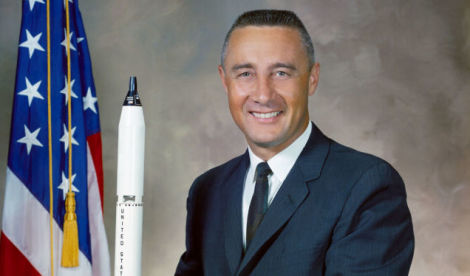
April 3, 1926 – The birth of Virgil Ivan “Gus” Grissom. Born in Mitchell, Indiana, Grissom was a test pilot, mechanical engineer, US Air Force combat pilot in Korea and one of the original seven Project Mercury astronauts. As part of the Mercury program, Grissom was the second American to fly in space after Alan Shepard, and the first US astronaut to go to space twice when he flew aboard Gemini 3. Grissom was chosen as the Command Pilot for Apollo 1, but he and astronauts Ed White and Roger Chaffee were killed on January 27, 1967 when a fire broke out in the Command Module during a ground test. All three astronauts were posthumously awarded the Congressional Space Medal of Honor.
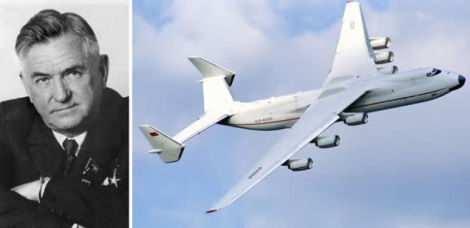
April 4, 1984– The death of Oleg Antonov. Born on February 7, 1906, Antonov founded an amateur aviation club at age 17 and designed a glider with which he won first place in a design competition. He worked for a time with the Yakovlev design bureau and, during WWII, he continued his work with gliders, designing a glider that could carry a full-sized tank. Antonov’s interest in large aircraft continued after the war, and he left Yakovlev to lead his own design bureau, which eventually became the company that bears his name. He specialized in very large cargo aircraft and airliners that could operate from unimproved runways. His company has produced approximately 22,000 aircraft, most famously the An-225 Mriya, the longest and heaviest airplane ever produced.

April 4, 1983 – The launch of Space Shuttle Challenger on STS-6, the sixth launch of the Space Shuttle program and the maiden flight of the Challenger. During the five-day flight, astronauts deployed the first tracking and data relay satellite (TDRS-1) and conducted the first spacewalk from a Shuttle, employing the new Extravehicular Mobility Unit (EMU) spacesuit for the first time. STS-6 was the last Shuttle flight with a four-man crew which consisted of Paul Weitz, Karol Bobko, Story Musgrave and Donald Peterson. Challenger returned to Edwards Air Force Base on April 9, ending the first of its nine successful flights before the orbiter was destroyed in an explosion shortly after launch on January 28, 1986 with the loss of seven astronauts.
April 4, 1993 – The first flight of the Fokker 70, a medium-range airliner derived from the larger Fokker 100, both of which were developments of Fokker’s first airliner, the Fokker F28 Fellowship. The Fokker 70 was designed to fit a capacity gap between the smaller Fokker 50 or ATR 42 turboprop airliners and the larger Boeing 737 or McDonnell Douglas MD-80. The Fokker 70 is powered by a pair Rolls-Royce Tay 620 turbofans and can accommodate up to 85 passengers in a single-class configuration at ranges of up to 2,119 miles. A total of 47 aircraft were built before production ended in 1997, and they mainly serve shorter routes in Europe.

April 4, 1947 – The International Civil Aviation Organization (ICAO) is founded. In the same year that the Wright Brothers made their first powered flight, the International Commission for Air Navigation (ICAN) held its first meeting in Berlin, Germany to formulate international standards for civilian aviation. By the third meeting in 1912, a system of international radio call signs was created. By 1947, the ICAO became a part of the United Nations, and currently has 192 members. The organization sets standards for many aspects of civil aviation such as airport codes, aircraft type and airline codes, baggage handling, measurement systems, safety standards, and accident investigation. The ICAO’s mission statement reads: To serve as the global forum of States for international civil aviation. ICAO develops policies and Standards, undertakes compliance audits, performs studies and analyses, provides assistance and builds aviation capacity through many other activities and the cooperation of its Member States and stakeholders.
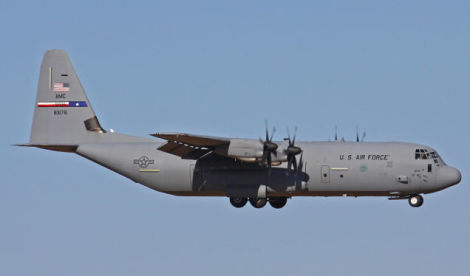
April 5, 1996 – The first flight of the Lockheed Martin C-130J Super Hercules, the latest version of the venerable Hercules tactical airlifter and the only variant that remains in production. Upgrades incorporated into the J model include new Rolls-Royce AE 2100 turboprop engines with six-bladed composite scimitar propellers and digital avionics. The Super Herk enjoys a 40% increase in range, a 21% increase in speed and a 41% shorter takeoff distance compared to the E and H models. The J is operated by the US Air Force, Marines and Coast Guard, as well as numerous international partners, and 400 have been produced as of February 2018.
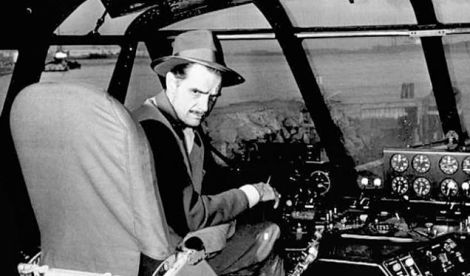
April 5, 1976 – The death of Howard Hughes, a famous though reclusive tycoon whose business interests included investments, filmmaking, and aerospace engineering. Born on December 24, 1905 in Humble, Texas, Hughes formed the Hughes Aircraft Company in 1932 and set numerous world records in the aircraft he produced, though he was not considered a particularly skillful pilot. He is best known for building and briefly flying the H-4 Hercules, popularly known as the Spruce Goose, the largest flying boat ever built, with the largest wingspan of any aircraft in history. Perhaps fittingly, Hughes died on board an airplane as a passenger while flying from his penthouse in Acapulco to Houston for medical treatment. In a fitting testament to his reclusive life, even the details of his death remain unclear.
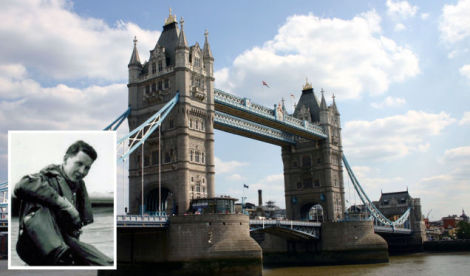
April 5, 1968 – RAF Flight Lieutenant Alan Pollock flies his Hawker Hunter under the top span of London’s famous Tower Bridge. Upset by the lack of an aerial display to mark the 50th anniversary of the founding of the RAF, Flt Lt Pollock of No. 1(F) Squadron protested by beating up (flying low over) several RAF airfields in his Hawker Hunter before turning towards London. There he circled the Houses of Parliament and saluted the RAF Memorial by dipping his wings, then followed that with a flight under the top span of the Tower Bridge, a feat that made him the first ever to fly a jet aircraft through the bridge. Pollock then beat up a few more airfields before returning to base inverted at 200 feet. Pollock was arrested, but never faced a court martial, as he was dropped from service on medical grounds before a trial could be held.
April 5, 1959 – The first flight of the Aero L-29 Delfin, the standard Warsaw Pact jet trainer throughout the 1960s and the first aircraft to be designed and produced in the former Czechoslovakia. The Delfin is a simple, rugged aircraft designed to operate from unimproved runways and is powered by a single Motorlet M-701C turbojet which provides a maximum speed of 407 mph. The student and instructor are seated in a tandem configuration, with the rear instructor’s seat slightly higher. In addition to pilot training, the Delfin also served as a weapons training platform carrying gun pods, bombs or rockets. A total of 3,500 were produced from 1963-1974.
Connecting Flights
If you enjoy these Aviation History posts, please let me know in the comments. And if you missed any of the past articles, you can find them all at Planelopnik History. You can also find more stories about aviation, aviators and airplane oddities at Wingspan.
